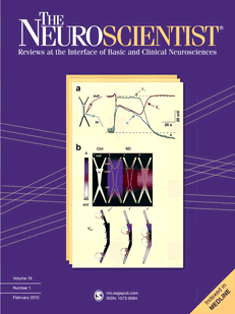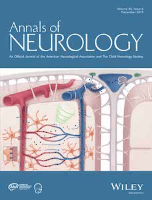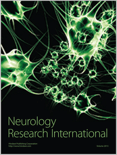
RESTORATIVE NEUROLOGY AND NEUROSCIENCE
Scope & Guideline
Nurturing Knowledge: Bridging Research and Clinical Practice in Neuroscience
Introduction
Aims and Scopes
- Neurorehabilitation Strategies:
The journal emphasizes the development and evaluation of rehabilitation strategies aimed at improving functional outcomes in patients with neurological impairments, particularly post-stroke rehabilitation. - Neuroplasticity and Recovery Mechanisms:
Research articles often focus on the underlying mechanisms of neuroplasticity that facilitate recovery from neurological injuries, exploring therapeutic interventions that promote synaptic efficacy and brain reorganization. - Clinical Trials and Pilot Studies:
The journal publishes findings from clinical trials and pilot studies that assess the effectiveness of various interventions, including pharmacological treatments and non-invasive brain stimulation techniques. - Innovative Technologies in Neuroscience:
There is a consistent focus on incorporating new technologies, such as brain stimulation and neuroimaging methods, to enhance our understanding of brain functions and recovery processes. - Animal Models in Neurological Research:
The journal includes studies utilizing animal models to investigate pathophysiological processes and potential therapeutic interventions for neurological conditions.
Trending and Emerging
- Non-invasive Brain Stimulation Techniques:
There is a growing body of research focusing on non-invasive brain stimulation methods, such as transcranial magnetic stimulation (TMS) and transcranial direct current stimulation (tDCS), demonstrating their potential for enhancing recovery in various neurological conditions. - Digital and Tele-rehabilitation Approaches:
Emerging themes include the use of digital platforms and tele-rehabilitation strategies, particularly in response to the COVID-19 pandemic, which have opened new avenues for patient engagement and therapy delivery. - Interdisciplinary Approaches to Neurological Recovery:
The journal is increasingly publishing studies that integrate insights from psychology, cognitive neuroscience, and rehabilitation science, reflecting a more holistic view of patient recovery. - Focus on Neuroinflammation and Neuroprotection:
Research on neuroinflammation and neuroprotective strategies is gaining prominence, addressing the importance of these factors in recovery processes across various neurological disorders. - Cognitive Rehabilitation and Neuropsychological Interventions:
There is an emerging interest in the cognitive aspects of rehabilitation, with studies exploring techniques to enhance cognitive recovery post-injury, particularly in stroke and traumatic brain injury populations.
Declining or Waning
- Traditional Pharmacological Interventions:
There seems to be a waning focus on traditional pharmacological approaches to neuroprotection and recovery, as newer, more innovative therapies and rehabilitation strategies gain traction. - Basic Science Research without Clinical Application:
Research that does not have a direct clinical application or translational aspect appears to be declining, as the journal increasingly prioritizes studies that bridge the gap between basic neuroscience and practical rehabilitation. - Retraction of Previously Published Studies:
A notable number of retracted articles indicates that previous research may have lacked robustness, highlighting a potential shift away from less rigorous scientific practices.
Similar Journals

NEUROSCIENTIST
Elevating Knowledge in Clinical Neurology and NeuroscienceNEUROSCIENTIST is a leading journal in the field of clinical neurology and neuroscience, published by SAGE Publications Inc. With an impressive impact factor reflected in its Q1 quartile ranking in both clinical neurology and miscellaneous neuroscience as of 2023, this journal positions itself as a crucial platform for the latest research and advancements in the neural sciences. Spanning from 1995 to 2024, NEUROSCIENTIST features a range of high-quality, peer-reviewed articles that cater to researchers, practitioners, and students alike. Although it does not offer Open Access options, the journal remains a vital resource owing to its Scopus rankings, situating it within the top percentile of its categories: ranked #28 out of 400 in clinical neurology and #15 out of 113 in general neuroscience. The journal's commitment to disseminating significant findings underlines its importance in fostering advancements in neurological understanding and treatment.

EXPERIMENTAL BRAIN RESEARCH
Fostering Innovative Discoveries in Experimental NeuroscienceEXPERIMENTAL BRAIN RESEARCH is a renowned journal published by SPRINGER, dedicated to advancing understanding in the field of neuroscience. With a history dating back to 1966, this journal offers valuable insights into the mechanisms of brain function and neurological disorders, making it a vital resource for researchers, professionals, and students alike. While it currently holds a Q3 classification in the field of Neuroscience (miscellaneous) and ranks #73 out of 113 in Scopus's General Neuroscience category, it continually contributes to fostering innovative research and collaborative dialogue. The journal is not open access, ensuring that although content is subscription-based, it maintains a high standard of peer review and scholarly rigor. By covering a breadth of topics relevant to both experimental and theoretical aspects of brain research, EXPERIMENTAL BRAIN RESEARCH serves as an essential platform for disseminating cutting-edge discoveries and theories in the dynamic realm of neuroscience.

NEUROREPORT
Fostering excellence in neuroscience research since 1990.NEUROREPORT is a distinguished journal in the field of neuroscience, published by Lippincott Williams & Wilkins. With an ISSN of 0959-4965 and an E-ISSN of 1473-558X, the journal has established itself as a vital platform for disseminating innovative research and developments in the dynamic area of neuroscience since its inception in 1990. Currently, it is positioned in the Q3 category of the 2023 Journal Rankings, reflecting its respectable standing within the community of neuroscience professionals, ranked #74 out of 113 in general neuroscience on Scopus, placing it in the 34th percentile. While it operates on a traditional subscription model, NEUROREPORT is committed to fostering knowledge sharing in the realm of neurobiology, neuropharmacology, and cognitive studies among researchers, professionals, and students alike. With its broad scope and commitment to scientific excellence, the journal continues to be a cornerstone for those seeking to stay ahead in the evolving landscape of neurological research.

ANNALS OF NEUROLOGY
Advancing the Frontiers of Neurological KnowledgeANNALS OF NEUROLOGY, published by Wiley, stands as a leading journal in the field of neurology, renowned for its rigorous peer-reviewed articles that contribute significantly to the understanding of neurological disorders and advances in clinical practices. With an impressive impact factor and ranked Q1 in both neurology and clinical neurology categories, this journal positions itself among the top repositories of cutting-edge research, indexed in Scopus with exemplary ranks in the 98th and 97th percentiles respectively. Since its inception in 1977 and with a commitment to excellence extending to 2024 and beyond, ANNALS OF NEUROLOGY aims to disseminate groundbreaking studies and foster dialogue within the academic community, making it an essential resource for researchers, healthcare professionals, and students dedicated to neurology. Although it does not currently offer open access, its accessibility through institutional subscriptions facilitates widespread scholarly engagement.

NEUROREHABILITATION AND NEURAL REPAIR
Exploring New Frontiers in Neurological Recovery.NEUROREHABILITATION AND NEURAL REPAIR, published by SAGE Publications Inc, is a leading journal in the fields of neurology and rehabilitation, addressing critical issues in neurorehabilitation across a broad spectrum of neurological disorders. With an impressive impact factor and consistently ranked in the Q1 category in both Neurology and Rehabilitation, this journal is esteemed for its rigorous peer-reviewed research contributing to advancements in clinical practice and rehabilitation strategies. The journal boasts an HIndex that reflects its global influence and is highly regarded among professionals and researchers, ranking in the top tiers of Scopus metrics across various categories. Since its inception in 1987, NEUROREHABILITATION AND NEURAL REPAIR has fostered innovative research aimed at improving outcomes for patients with neurological impairments, making it a crucial resource for those engaged in clinical research and therapeutic interventions. Explore this prestigious journal to stay at the forefront of developments in neurorehabilitation, with access options available for diverse readerships.

Archives of Neuroscience
Bridging research and clinical practice for a healthier brain.Archives of Neuroscience is a multidisciplinary journal dedicated to advancing the field of neuroscience through the publication of original research articles, review papers, and case studies. Published by BRIEFLAND, this journal aims to bridge the gap between neuroscience research and clinical applications, fostering a deeper understanding of brain function, neurological disorders, and potential therapeutic approaches. With an ISSN of 2322-3944 and an E-ISSN of 2322-5769, Archives of Neuroscience serves as an essential platform for researchers, professionals, and students alike, encouraging open access to knowledge and insights that drive innovation in the field. Although coverage was discontinued in Scopus from 2016 to 2017, the journal continues to uphold rigorous standards of academic excellence, making it a valuable resource for the neuroscience community seeking to explore and disseminate new findings. The journal is committed to providing timely access to research tools and findings that are crucial for informed decision-making in both academic and clinical settings.

Annals of Clinical and Translational Neurology
Pioneering Research for Tomorrow's TreatmentsAnnals of Clinical and Translational Neurology is a premier journal published by WILEY, focusing on the fields of neurology and neuroscience. Since its inception in 2014, it has established itself as an Open Access platform, providing unrestricted access to cutting-edge research to promote scientific collaboration and innovation. With an impressive Impact Factor residing in the top quartile (Q1) for both clinical neurology and miscellaneous neuroscience in 2023, this journal ranks #52 out of 400 in the Neurology category and #22 out of 113 in General Neuroscience, indicating its significant contribution to the field. The journal welcomes submissions that address emerging trends and challenges in translational neurology, aiming to bridge the gap between laboratory research and clinical practice. By disseminating high-quality research and fostering a community of scholars, Annals of Clinical and Translational Neurology plays a vital role in advancing our understanding of neurological disorders and improving patient care worldwide.

Neurology Research International
Empowering Neurological Discovery and DialogueNeurology Research International, published by HINDAWI LTD, is an esteemed open access journal that has been serving the neurology community since 2010. With its ISSN 2090-1852 and E-ISSN 2090-1860, this journal aims to foster knowledge dissemination and facilitate dialogue surrounding key issues in neurology and clinical neuroscience, making it a vital resource for researchers, clinicians, and students alike. It operates from the United States, with its administrative hub located in London, England. As of 2023, the journal has been positioned in the Q3 category for both neurology and clinical neurology, reflecting its commitment to advancing research within these critical fields. With a current Scopus rank of #216/400 in clinical neurology and a #113/192 in neuroscience, and a converged publication timeline from 2010 to 2024, Neurology Research International is dedicated to promoting high-quality research that addresses contemporary challenges and innovations in neurological science. By offering open access since its inception, it ensures that cutting-edge research is freely available, aligning with the global push towards accessible scientific communication.

Frontiers in Neurology
Empowering Knowledge in Neurology for a Healthier TomorrowFrontiers in Neurology is a premier open-access journal dedicated to the advancement of research in the field of neurology, published by FRONTIERS MEDIA SA since 2010. With the ISSN 1664-2295 and an international reach established from its base in Lausanne, Switzerland, this journal has rapidly become a vital resource for neurologists and neuroscientists alike, presenting high-quality research that addresses critical developments in clinical and experimental neurology. Holding a solid Q2 quartile ranking in both neurology and clinical neurology, Frontiers in Neurology demonstrates substantial influence, evidenced by its respectable Scopus rankings—151st in clinical neurology and 77th in neuroscience neurology. The journal employs robust peer review practices to ensure rigor and integrity, while its open-access model fosters widespread dissemination of knowledge. By facilitating interdisciplinary dialogue and empowering research efforts, this journal not only supports the academic community but also contributes to the advancement of treatment and understanding of neurological disorders.

Frontiers in Human Neuroscience
Bridging Neuroscience with Behavioral InsightsFrontiers in Human Neuroscience is a premier open access journal published by FRONTIERS MEDIA SA, dedicated to advancing the understanding of the complexities of human neuroscience. With an ISSN of 1662-5161, the journal has established its prominence in various fields, achieving a Q2 ranking in categories such as Behavioral Neuroscience, Neuropsychology and Physiological Psychology, and Psychiatry and Mental Health as of 2023. Since its inception in 2008, Frontiers in Human Neuroscience has consistently contributed to the scholarly dialogue by offering a platform for innovative research that bridges the gap between neuroscience and behavioral science. The journal's rigorous peer-review process and commitment to open access ensures that findings are readily available, promoting collaboration and progress within the academic community. With an impact on neuroscience disciplines, it stands at the forefront of the field, inviting researchers, professionals, and students alike to engage with cutting-edge studies and developments. The journal's address is located in Lausanne, Switzerland, where it continues to flourish as a hub for neurobiological exploration.